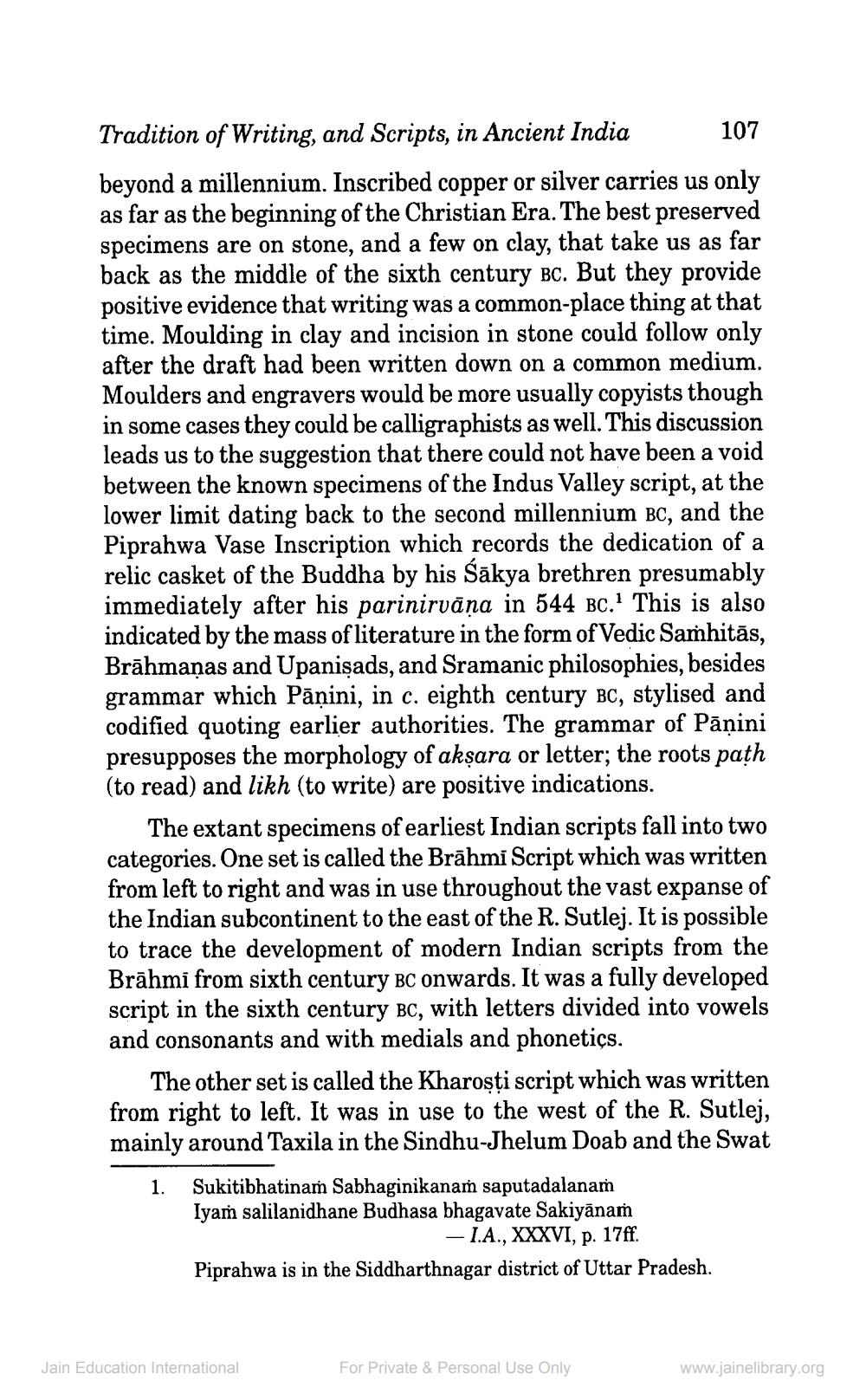________________
Tradition of Writing, and Scripts, in Ancient India 107 beyond a millennium. Inscribed copper or silver carries us only as far as the beginning of the Christian Era. The best preserved specimens are on stone, and a few on clay, that take us as far back as the middle of the sixth century Bc. But they provide positive evidence that writing was a common-place thing at that time. Moulding in clay and incision in stone could follow only after the draft had been written down on a common medium. Moulders and engravers would be more usually copyists though in some cases they could be calligraphists as well. This discussion leads us to the suggestion that there could not have been a void between the known specimens of the Indus Valley script, at the lower limit dating back to the second millennium BC, and the Piprahwa Vase Inscription which records the dedication of a relic casket of the Buddha by his Sākya brethren presumably immediately after his parinirvāṇa in 544 BC. This is also indicated by the mass of literature in the form of Vedic Samhitās, Brāhmaṇas and Upanişads, and Sramanic philosophies, besides grammar which Pāṇini, in c. eighth century BC, stylised and codified quoting earlier authorities. The grammar of Pāṇini presupposes the morphology of aksara or letter; the roots path (to read) and likh (to write) are positive indications.
The extant specimens of earliest Indian scripts fall into two categories. One set is called the Brāhmi Script which was written from left to right and was in use throughout the vast expanse of the Indian subcontinent to the east of the R. Sutlej. It is possible to trace the development of modern Indian scripts from the Brāhmi from sixth century BC onwards. It was a fully developed script in the sixth century BC, with letters divided into vowels and consonants and with medials and phonetics.
The other set is called the Kharosti script which was written from right to left. It was in use to the west of the R. Sutlej, mainly around Taxila in the Sindhu-Jhelum Doab and the Swat
1.
Sukitibhatinam Sabhaginikanam saputadalanam Iyaṁ salilanidhane Budhasa bhagavate Sakiyānam
- I.A., XXXVI, p. 17ff. Piprahwa is in the Siddharthnagar district of Uttar Pradesh.
Jain Education International
For Private & Personal Use Only
www.jainelibrary.org




